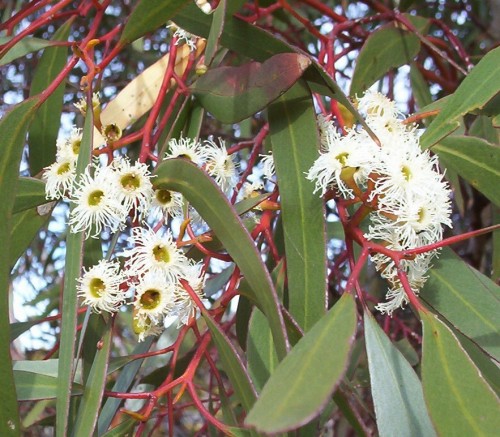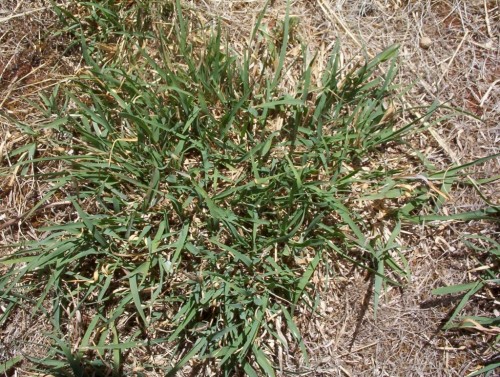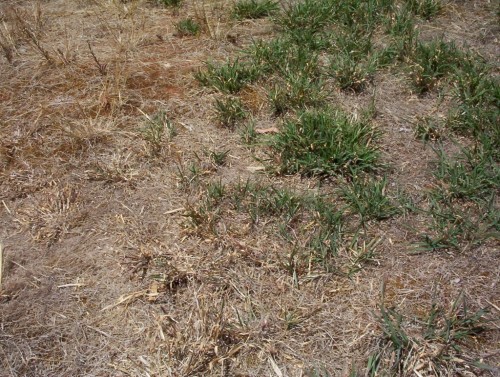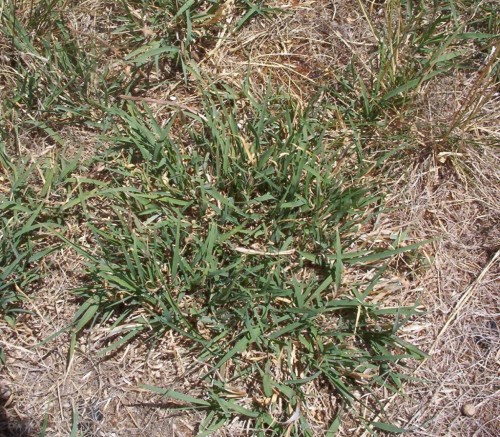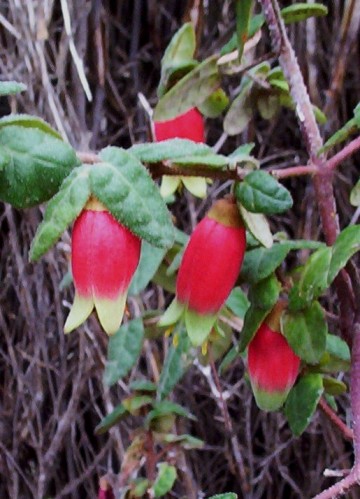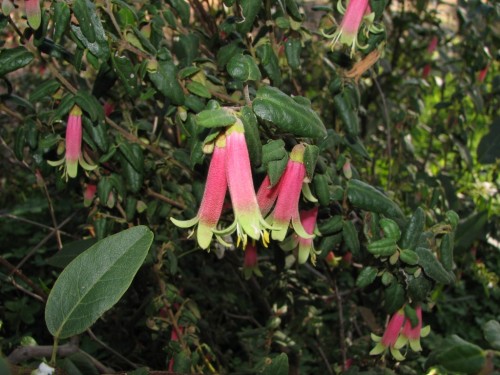Eucalyptus socialis (Red Mallee)
I found this mallee at Lowan Conservation Park when we visited there a couple of months ago. It is a frost hardy and drought tolerant plant.
It is often cultivated because of its ability to grow on a range of sites in dry areas, including shallow limestone. It has a moderate growth rate and flowers at an early age. Its height ranges from 2 to 8 metres. Here it seems to be about 5 metres tall with a lovely wide canopy of foliage, making it a nice shade tree.
Chloris truncata (Windmill Grass) As Lawn
It naturally occurs on sandy and clay soils including disturbed sites such as roadsides, and in grassy woodlands.
Information from the Nativel Grasses Resource Group says that the seed requires a lot of moisture to germinate. It has been seen sprouting while floating on the water in a sheep trough. An easy way to replicate this is to sow the seed in a pot and stand the pot in a container of water deep enough so that the surface of the pot remains very moist. Reduce the water level as the seed germinates.
We had about 3mm rain today. I don’t know how that will affect my experiment mentioned in the last post.
Chloris truncata (Windmill Grass)
This grass is one that is on a list of reccommended lawn substitutes, along with Austrodanthonia (Wallaby Grass), and Microlaena stipoides (Weeping Rice Grass). I was warned off the Microlaena because it really is a higher rainfall species, 500 – 700mm rain. As we are in a rain shadow, and a winter wet dry summer area (344mm rain per year), it was going to be a struggle to keep this looking reasonable without using more water than I wanted to. After all it is supposed to substitute for water hungry grasses.
The good thing that happened is that the Windmill Grass is green and has been for two and a half weeks. That is in spite of at least four days with temperatures above 41C and at least seven days around 36C. I will be letting it go and observing how long it takes to be unacceptable as a lawn. I don’t see much point in having a lawn if it can’t be kept green.I was very pleased with the appearance of the plant. I had dismissed this species because my experience had shown it to be too tufted and therefore coarse to be a lawn. However the plant has spread and stayed low since it was mown about four weeks before the watering incident.
I am not sure how this will go so far as foot traffic is concerned. I will deliberately use part of it as a pathway to see how it copes with occasional walking. Unfortunately the patch is not near the house where I could walk on it constantly.
Some people have stated (and it is also in some articles) that Chloris behaves like an annual. We have not seen this characteristic because it is mown every year in late spring as part of our fire protection and to make it more pleasant to walk around our fruit trees. The mower is usually set at 3 out of a possible 6 settings. The mower is driven around on the 6 setting. 3 is a bit low for the spear grasses but for the Chloris it seems to be ideal. The patch seems to increase in size and thicken every year.
I am not sure what to do now. I think I will dig a few clumps and divide them and grow them on in forestry tubes to be planted out with the late autumn rains next year. I will also at that time try dividing and planting dirsctly into the ground. In fact that is a possibility now. (Too many other things to do.)
More Hardy Correas
The Brisbane Ranges are in Victoria and the Correa named after them is quite hardy. I have still to learn more about the cultivation requirements as I am a bit tentative about leaving it to its own devices.
Correa reflexa (Pink form)
This plant is summer flowering which is a nice change as there are not too many Australian Native plants which flower at this time of the year. Most are finishing around Christmas time. It is under a metre tall and wide and is exposed to full sun light most of the day. It is in a location under mallee trees and where there is some limestone rubble in the soil.
